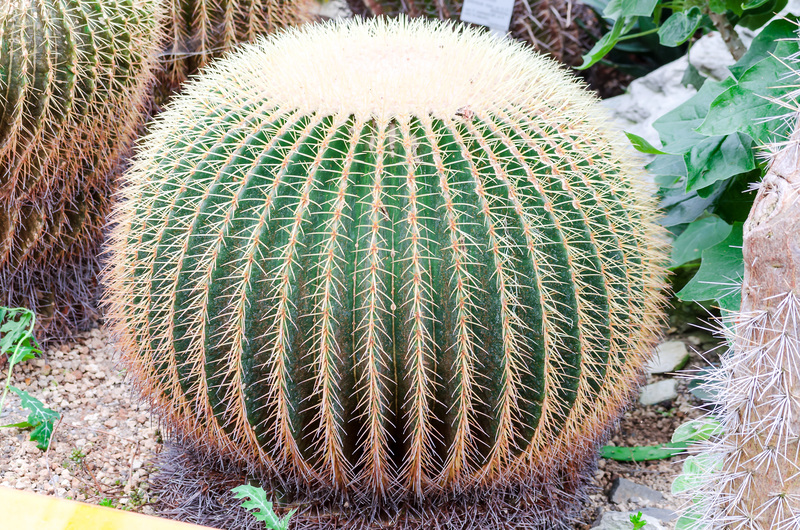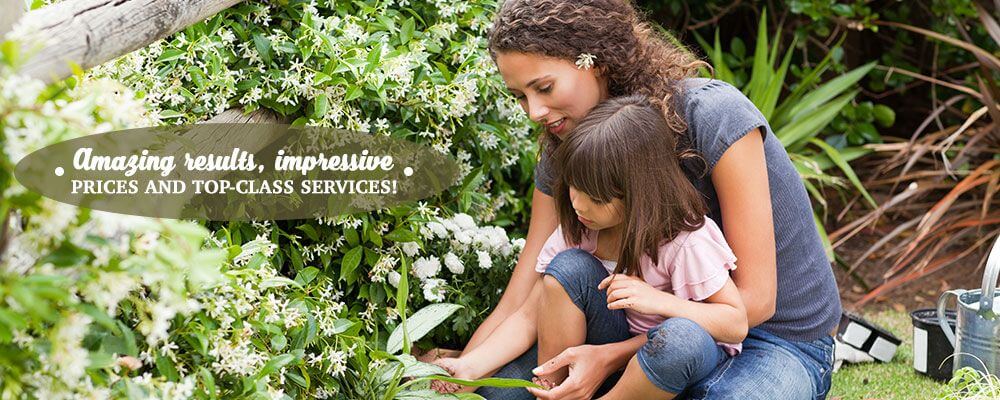Top Tips for Cleaning Your Patio and Paving Like a Pro
Posted on 02/11/2025
Top Tips for Cleaning Your Patio and Paving Like a Pro
Your patio and paving are essential parts of your outdoor living space, serving as the foundation for relaxation, dining, and entertaining. However, exposure to the elements can leave them looking tired, dirty, and even slippery. Whether your patio stones are paved with elegant natural stone, durable concrete, or classic brick, knowing the best practices for cleaning is key to keeping them looking beautiful all year round. In this comprehensive guide, we share the best tips for cleaning patios and paving like a professional so you can restore their original charm and maximize their lifespan.

Why Regular Patio and Paving Cleaning Matters
Routine cleaning of your patio and paving offers far more than just aesthetic benefits. Neglected surfaces accumulate dirt, moss, algae, weed growth, and even stains from food or oil, making your outdoor spaces less enjoyable. More seriously, slippery algae or moss can make walking hazardous, while ingrained grime can slowly damage the paving material over time.
- Enhance curb appeal and the overall look of your garden or backyard.
- Prevent safety hazards like slips and falls due to moss or algae.
- Maintain the durability and lifespan of paving materials.
- Increase property value by showing well-kept outdoor spaces.
With that in mind, let's break down the top techniques for professional patio and paving cleaning that you can use at home.
Preparation: Clearing and Inspecting Your Patio
Before diving into any cleaning process, take the time to prepare your patio or paving area's surface for the best results.
1. Clear Furniture and Debris
- Remove all furniture, pots, grills, and decorative items from the patio.
- Sweep away leaves, loose dirt, twigs, and surface debris using a stiff outdoor broom.
- For large patios, use a leaf blower to make the task easier and faster.
2. Inspect for Damage
- Look for cracked, loose, or sunken paving slabs that may require repair before cleaning.
- Pay attention to any signs of biological growth (such as weeds, moss, or lichen) that need special treatment.
- Note any oil, rust, or paint stains that require targeted stain removal methods.
Essential Tools and Materials for Patio Cleaning
To clean your patio and paving efficiently, gather the right tools and materials. The following checklist will ensure you are well-equipped to tackle any cleaning task:
- Stiff-bristled broom or patio brush
- Pressure washer (optional for tougher dirt)
- Garden hose with spray nozzle
- Bucket and mop
- Eco-friendly patio cleaner or mild detergent
- Weed remover or hoe
- Wire brush for stubborn spots
- Protective gloves and safety goggles
- Knee pads (if scrubbing by hand)
Best Methods for Cleaning Your Patio Like a Pro
Cleaning paving stones and patios can be simple with the proper techniques. Whether you clean weekly, monthly, or seasonally, these methods will help you achieve professional results.
1. Sweeping and Washing with Water
- Begin by sweeping thoroughly to remove loose dirt and debris.
- Rinse the patio with a garden hose to wash away fine dust particles.
- For a deeper clean, use a broom and a bucket of soapy water (mild detergent or specialized patio cleaner). Scrub the surface, then rinse with clean water.
2. Removing Weeds and Moss from Patio and Paving
- Remove weeds and moss using a weed puller, hoe, or by hand (with gloves).
- Stubborn moss can often be dislodged with a wire brush or a homemade vinegar solution (mix one part vinegar, one part water, and spray on affected areas).
- Be mindful not to disturb jointing sand excessively, as this weakens the paving structure.
3. Cleaning Patios with a Pressure Washer
A pressure washer can make light work of even the dirtiest patios and paved areas, but use with caution to prevent damage.
- Use a fan nozzle (not a pinpoint jet) to avoid gouging or loosening patio joints.
- Keep the nozzle at least 12 inches from the surface, moving in a consistent sweeping motion.
- For best results, start at the farthest point and work towards a drain or exit point.
- Rinse thoroughly and allow to dry before replacing furniture.
4. Dealing with Tough Stains: Oil, Food, and Rust
- Oil and grease stains: Blot spills immediately with absorbent material, then treat with a degreaser or warm soapy water.
- Food stains like wine, coffee, or sauces: Clean promptly with baking soda paste or specialized patio cleaner.
- Rust marks: Use lemon juice or a commercial rust remover, but test on a small area first to avoid discoloration.
- Never use acidic or bleach-based cleaners on natural stone, as they can etch the surface.
Special Considerations for Different Paving Materials
Not all paving materials respond the same to cleaning products or techniques. To clean your patio and paving professionally, tailor your approach to the specific material.
Cleaning Concrete Patios
- Durable and resilient, concrete tolerates most cleaning methods--even pressure washing.
- Avoid strong acidic cleaners that can erode or discolor the surface.
- Seal concrete patios every few years to protect against staining and moss growth.
Cleaning Natural Stone Patios
- Natural stones (limestone, sandstone, granite, slate) require gentle treatment.
- Use only pH-neutral or stone-safe patio cleaners.
- Avoid harsh power washing or wire brushes which may scratch or damage the surface.
- Apply sealant to resist weathering and stains.
Cleaning Brick or Block Paving
- Sweep and wash as normal, but be careful not to dislodge sand from joints.
- Re-sand joints after pressure washing to prevent weed growth and shifting.
- Spot-treat stains and moss quickly to prevent permanent damage.
Eco-Friendly Patio and Paving Cleaning Solutions
Choosing environmentally safe products and practices preserves your local ecosystem and protects pets and plants.
- Baking soda: Mix with water to form a paste for scrubbing stains.
- White vinegar: An effective natural solution for moss and weed control (avoid using on sensitive natural stone).
- Lemon juice: Naturally removes rust and light stains.
- Commercial eco-friendly cleaners are widely available; check labels for pet and plant safety.
Preventative Maintenance: Keeping Your Patio Clean Year-Round
Proactive measures can extend the life of your paving and simplify your cleaning routine.
- Sweep regularly to prevent build-up of dirt, leaves, and grit that cause stains and slippery surfaces.
- Power wash annually or bi-annually to refresh your patio before peak use during spring and summer.
- Apply a protective sealant every few years, particularly to natural stone and concrete.
- Clear fallen leaves and organic material promptly, especially in autumn, to prevent rot and staining.
- Encourage good drainage by keeping guttering and patio edges clear of obstructions.
Common Mistakes to Avoid When Cleaning Patios and Paving
Even with the best intentions, a few missteps can damage your patio or compromise your results. Steer clear of these common mistakes for a truly professional finish:
- Using **excessive pressure** when power washing vulnerable surfaces, which risks loosening joints or chipping stone.
- Neglecting to test stain removers in an inconspicuous area before full application.
- Applying bleach or acidic cleaners to natural stone, causing permanent damage or discoloration.
- Allowing thick moss or weeds to grow unchecked, which can damage the structure or appearance of your paving.
- Skipping seasonal maintenance, resulting in harsher, more time-consuming cleaning sessions later.
Professional Patio and Paving Cleaning Services: When to Call the Experts
While DIY patio cleaning suits most households, some situations may require professional intervention:
- Large, severely soiled, or neglected patios where standard cleaning is not enough.
- Intricate or fragile natural stone installations needing specialist care.
- Persistent or deep-set stains that resist home remedies.
- Paving areas with structural issues, such as sunken or uneven stones.
If you invest in a professional cleaning service, choose companies experienced in treating your specific paving type and always ask for environmentally sensitive cleaning methods.

FAQs: Your Patio and Paving Cleaning Questions Answered
- How often should I clean my patio?
*At minimum, sweep once a week and deep-clean at least once a year. High-traffic, shaded, or damp areas may need more frequent attention.* - Can I use bleach to clean my patio?
*Bleach may be effective on concrete, but it can damage natural stone and pose environmental risks. Always use with caution and rinse thoroughly.* - How do I prevent weeds in block paving?
*Maintain jointing sand, use weed barrier fabric beneath new installations, and pull weeds promptly before they take root.* - What is the best way to remove algae?
*Pressure washing or scrubbing with a patio cleaner works well. For eco-friendly control, use vinegar (avoiding natural stone) or look for specialist algae removers.* - Is pressure washing safe for all types of patio?
*No. Gentle pressure should be used on natural stone and jointed block paving, while concrete generally tolerates higher pressure.*
Conclusion: Achieve a Professional Patio Clean at Home
Restoring your patio and paving to a spotless, attractive state need not be difficult with the right approach. By following the pro patio and paving cleaning tips outlined in this guide, you can eliminate stains, moss, and grime, while preserving the integrity and beauty of your outdoor living spaces.
Invest a little time in regular maintenance, adopt eco-friendly cleaning solutions where possible, and always tailor your approach to the type of paving. If you encounter any issues beyond your expertise, do not hesitate to consult professional patio and paving cleaning services.
With these strategies, your patio and paving will remain safe, pristine, and a pleasure to enjoy for years to come!




